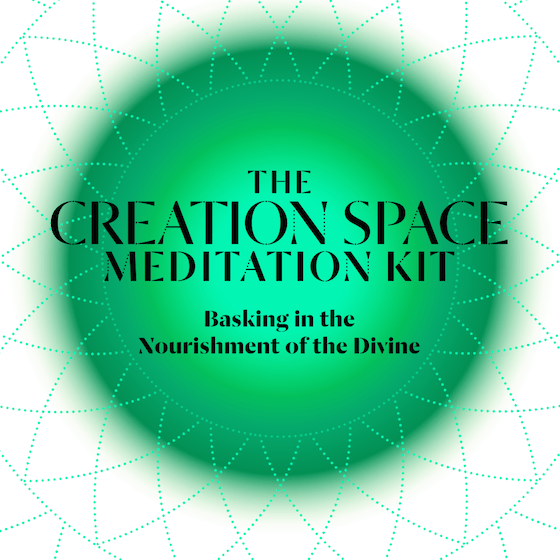Prayer can be a touchy and controversial topic. For some, prayer is a religious act and religion is one of those topics we are told best not broached. What if, rather than being divisive, prayer is unifying, a common ground?
“Being prayerful.”
This phrase feels beautiful, and transcendent for me. Being prayerful is this meditative state of connection to something bigger than this mortal body, to the universe, God, the Divine, or whatever label that works for you. It is a womb space, beyond the ego, one with the Breath and all the elements that constitute existence as we know it….connecting us to the unknown, unknown at least to the intellect though always felt with the heart. To “a sweeter more abundant life” and a “peace that is not of this world.”1
What is prayer for you?
For some people prayers, perhaps because some religions teach that we are sinners, are about forgiveness and deliverance from pain and suffering. When the movie Da Vinci Code first came out, many people refused to see it. There was talk that it completely contravened the teachings of the Church…or did it invite us to explore the more mystical and gnostic?
For her book How Do You Pray, Celeste Yacobani asked a spectrum of people from various faiths and non-faiths how they pray. For the book’s forward, Mirabai Starr writes that “our relationship with Spirit is ever-changing. Our prayer life reflects this fluidity.”
Some of the writers are unapologetically religious, and have a juicy personal relationship with God. Some related to the Divine as the mysterious holiness that pervades and connects all that is, but would prefer not to personify it. Others deny the existence of what could be called God, and yet their inner lives are a source of sanctuary from which they draw sustenance to be of better service. All seem to affirm that the natural outflow of prayer is compassionate action, and that to cultivate a solitary connection with the Divine is to participate in a collective spirituality that uplifts the whole world.
Mirabai Starr, author and translator of sacred literature2
In a world that is fast changing, the internal landscape may be pulled, like water by the moon, to respond and fear can be a powerful divisive force. Within this collection of writings, discover the common threads that run through all the heady wisdom and light-heartedness in diversity. We are more alike at the fundamental level than we are different.
How we pray reflects where we are in life. In times of deep suffering, pain, and fear, I too have asked for it all to be taken away. I’m guessing you, like me, at some point have bargained for some trade. This (whatever this is), to be paid by good behaviour. Take me, instead of her, many parents have offered. Sometimes, in prayer, we find the strength, perhaps first borne of anger and defiance, to transform a perception of struggle and unfairness into aliveness.
First you give me cancer, and now you are giving me this? This is how you wanna roll? Then let’s roll. This is how you wanna dance? Let’s dance. You think this is going to make me not live? Watch me live.
Rayya Elias3

Gregg Braden2 shares that modern prayer researchers see four broad categories –
- colloquial or informal prayers
- petitionary prayers
- ritualistic prayers
- meditative prayers
He also offers a fifth type – the “lost mode”.
The “lost mode” does not refer to prayer said when lost in the valley of darkness. It is a feeling-based prayer that is not ritualistic or even worded. A “lost mode” prayer is a recognition that we are fully able to communicate with an intelligent force. We can clearly feel this powerful force and know that our prayers are already answered.
This “lost mode” is how Byron Katie sees it. No prayers are really necessary because there are no wants and no needs. If you are familiar with her work, this makes complete sense. We cannot change the events that have transpired. What we can do and have absolute power over is to choose how to think about the past.
Byron Katie writes further that “when we pray for something, it is always the story of the past projected as the future.”2 It is in the present moment, in the now, that we can affect change and one of the biggest changes is recognizing the beauty, the benevolence, and the true state of existence. Positive denial is seeing what is happening in the world and understanding truth lies beyond the illusion of the material plane and beyond the veil. Knowing this changes how we pray, how we connect, how we live.
Events ultimately unfold according to the subconscious rather than conscious programming and prayer is a way of healing and releasing the subconscious mind.
Marianne Williamson1
Prayers can be a religious ritual, deeply rooted in the teachings, which may turn away the agnostic and atheist and those wounded by men and women of the cloth. Religion however is not essential to a practice of prayers and the state of prayerful. I urge anyone who comes from a path and has been questioning it to read How Do You Pray and try some of the prayers in Marianne Williamson’s Illuminata : thoughts, Prayers, Rites of Passage.
Brother David Steindl-Rast simply asks – “What lifts up your heart and mind? What gives you a lift?”2 For Sandra Ingerman, she sees the lifting of “all who I pray for into radiance.”2
Prayer is not something one “does” – it is not an asking or a “doing” ….it is a wonderment, a state of innocence, a state of grace, a sense of deep gratitude.
Miten2
Knowing what lifts us requires being in the void and emptiness of who we are, and listening. Deep listening. Listening without wanting, without grasping. “Learning to pray is learning to listen,” writes Llewellyn Vaughan-Lee in Prayer of the Heart in Christian and Sufi Mysticism, and “listening itself is a form of prayer in which our whole being is receptive.”4

Being receptive, silent, surrendering and waiting. Do you feel resistance here? Many people do. We are afraid of what is not tangible in the materialistic sense and of what is truly profound. Instead we are addicted to, even while we feel overwhelmed by, external stimuli. A break, a fast, a retreat from this “unnatural mental pollution” as Marianne Williamson calls it has profound positive effects on our health and well-being in every way and every level of our life.
The prayer pose is the mudra we use when we place our hands at the heart chakra or the third eye and bow in acknowledgement of the equality, sacredness, and divine that is within you as it is within me. In Jin Shin Jyutsu, we touch or hold the centre of our palm to harmonize the Sixth Depth – the Primordial Fire, the Breath of Life. On the manifested level, we are accessing and uniting the Mother and Father archetypes and energies. An easy way to do this is with the prayer pose.
Prayer is uniting; it is not only for the religious or the believers. Here is what Mark Robert Waldman, a self-labeled secular neuroscience researcher, says – “Buddhist meditation, Hindu yoga, Christian entering prayers, Sufi chanting, self-hypnosis, deep relaxation, positive affirmations, mantras, mudras, mindful eating, and moment-to-moment observations of our inner feelings, thoughts and sensations all have the power to change the structure and function of the brain in ways that lower stress, anxiety, depression, anger, and blood pressure. They enhance memory, concentration, social awareness, compassion, empathy, and moral decision-making. And it doesn’t matter if you’re a believer, agnostic, or nonbeliever.”2
Perhaps, like Mark Waldman, we can combine different practices throughout the day or create our own. Being prayerful is not simply in the act of praying. It is this state of mindfulness, gratitude, kindness, and grace that infuses all that we do, from the mundane (like eating) to the more profane.

3 audios from Danielle LaPorte with the intention to bring the supple and generous energy of creation into your being. Including 10 + 20-minute audio versions of The Creation Space Meditation. Along with an introduction meditation theory (and cheerleading) audio from Danielle.
1 Williamson, Marianne. (1994) Illuminata : thoughts, Prayers, Rites of Passage [Kindle version]
2 Yacoboni, Celeste. (2014) How Do You Pray? Inspiring Responses from Religious Leaders, Spiritual Guides, Healers, Activities & Other Lovers of Humanity [Kindle version]
[editor]. (2014) How Do You Pray?. [Kindle version]
3 Pressler, Jessica. Let’s See How Alive We Can Be. New Yorker.
4 Vaughan-Lee, Llewellyn. (2012) Prayer of the Heart in Christian and Sufi Mysticism [Adobe PDF]

